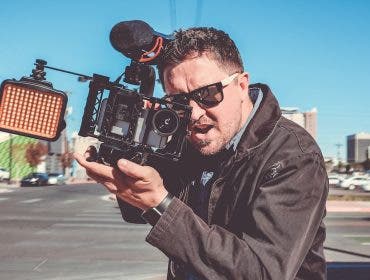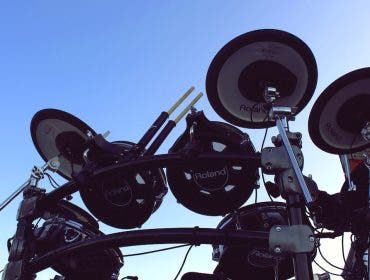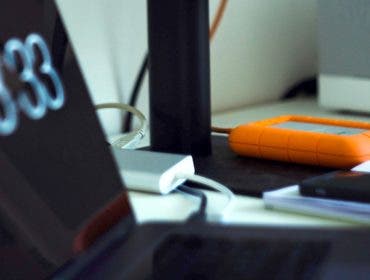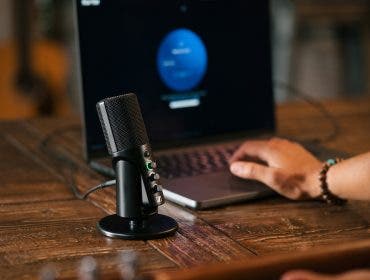Taking self portraits is sometimes the only way you can practice portraiture. Other times, self portraits are a complete expression of your artistic self. Its an innovative way to compose a visual story or a personal statement. Self portraits can enclose so much meaning and intimacy.
This type of photography is something all photographers should try at some point — and many of them do. See the example of renowned street photographer Joel Meyerowitz, who in did 2020 a self-portrait series as a way of personal discovery and reflection. Whether you prefer street, nature, or commercial photography, taking self portraits can help you understand how it feels to be in front of the camera, deepen your emotions and connection with the subject, and embrace photography holistically. Continue reading to find the best tips and tricks for taking artful and meaningful self portraits.
What is a Self Portrait?
A self portrait is a photograph of oneself taken by oneself. In other words, the photographer is also the subject. To create a self portrait, the photographer may use a mirror (like painters used to do in the old days), handhold the camera facing them, use a remote trigger, or try a selfie stick.
However, a self portrait is more than a selfie. It implies professional image quality, portraiture-like compositions, and artistry. A self-portrait is no different than a regular photographic portrait.
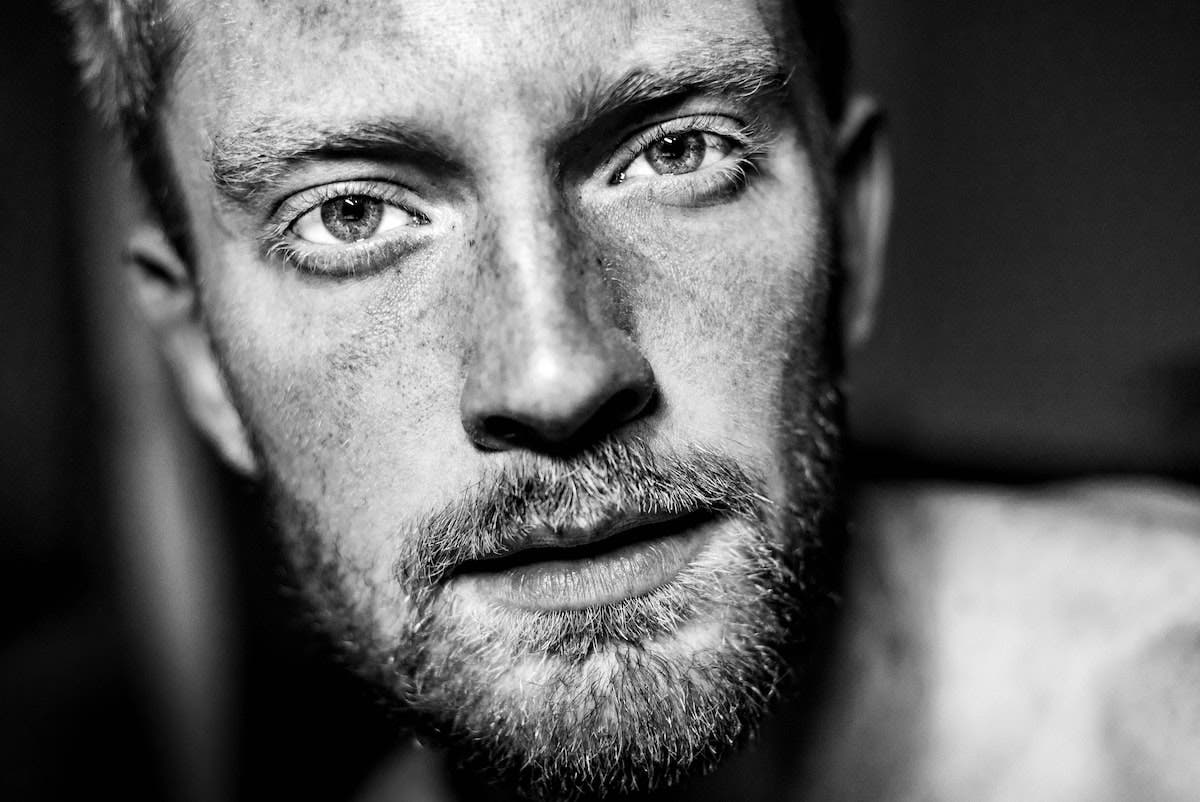
Gear to Take Self Portraits
To achieve the same composition and artistry level for a self portrait as for a portrait, the photographer needs to achieve the same perspectives and camera angles. To do this, consider adding the following items to your current gear kit.
A Camera with a Vari-Angle Flip Screen
To take a self portrait, you must have the camera facing you — but you can’t be in front of the camera and behind it simultaneously. Thus, you either frame the self portrait composition without you in the frame (using markers and a trial-and-error process) or you use a camera with a vari-angle flip screen. The vari-angle screen allows you to stand in front of the camera and see the framing on the screen. If you aren’t happy with your pose, you can simply adjust it without going back and forth between the front and back of the camera.
More than One Lens
A prime 50mm lens is the first option for a portrait photographer. It gives the same perspective as the human eye and creates realistic compositions. However, for self portraiture, you should also consider using a wide-angle zoom lens, such as an 18-35mm. It allows you not only to adjust the focal length but also to create a deep depth of field, stay closer to the camera, and trigger the shutter release without using a remote control.
Check out 35mm vs 50mm Lens Choice: Which is Right for You? to learn more.
A Tripod
A tripod comes in handy for self portraits because it helps you stabilize the camera on any terrain. Thus you can take self portraits outdoors without worrying about tilting the camera and creating awkward framings. A professional camera and lens setup is usually heavy and needs proper stabilization to avoid shaking the camera and blurring the photos. Imagine holding the camera with one hand while trying to achieve a pose at the same time. It’s almost impossible without a tripod.
An L-Bracket
An L-bracket is a metal plate that lets you vertically mount the camera on a tripod. As portrait orientation is the most popular framing for portraiture, you need to be using it when taking self portraits.
A Ring Light
Ring lights are popular among portrait photographers because they produce a soft and evenly distributed light that flatters the subject. You can adjust brightness and color temperature to highlight the best features of the person’s face. So you can hugely improve self portraits by using the same professional lighting equipment as a portrait photographer.
Flashpoint offers a ring light that is ready to be used out of the box. Or, if you have already have a Flashpoint light, you can purchase a ring light attachment.
A Wireless Remote Control
Triggering the shutter release by pressing the button won’t take you too far with self portraiture. You need the same freedom of choosing the camera-subject distance and camera angle as you have for other types of photography. A wireless remote control has an action range of up to 60m. Furthermore, it eliminates the risk of any camera shake.
An Intervalometer
An intervalometer is a device that triggers the camera to take multiple photographs in a particular amount of time. It’s useful when you want to take a series of self portraits in different poses. You can even create long-term narratives. The intervalometer can trigger the camera to take hundreds of photos without you touching it. Some cameras have built-in intervalometers, so check if yours has one and learn how to use it.
Ideas for Self Portraits
If you don’t know where to start, the following 30 creative ideas will help you find inspiration. But remember that self portraits are personal creations and require you to commit and engage in the process. Self portraits are more about you than any other of your photographs.
Photograph your reflection
Use a mirror, window, or reflective surface to capture a glimpse of you. You may choose to hide your face behind the camera or shoot from your hip as for a lomography photo.
Use double exposure
Overlay two images in post-processing or using the multiple exposure mode on your camera. You can opt for two photos of yourself or a self portrait and a background image, such as a landscape.
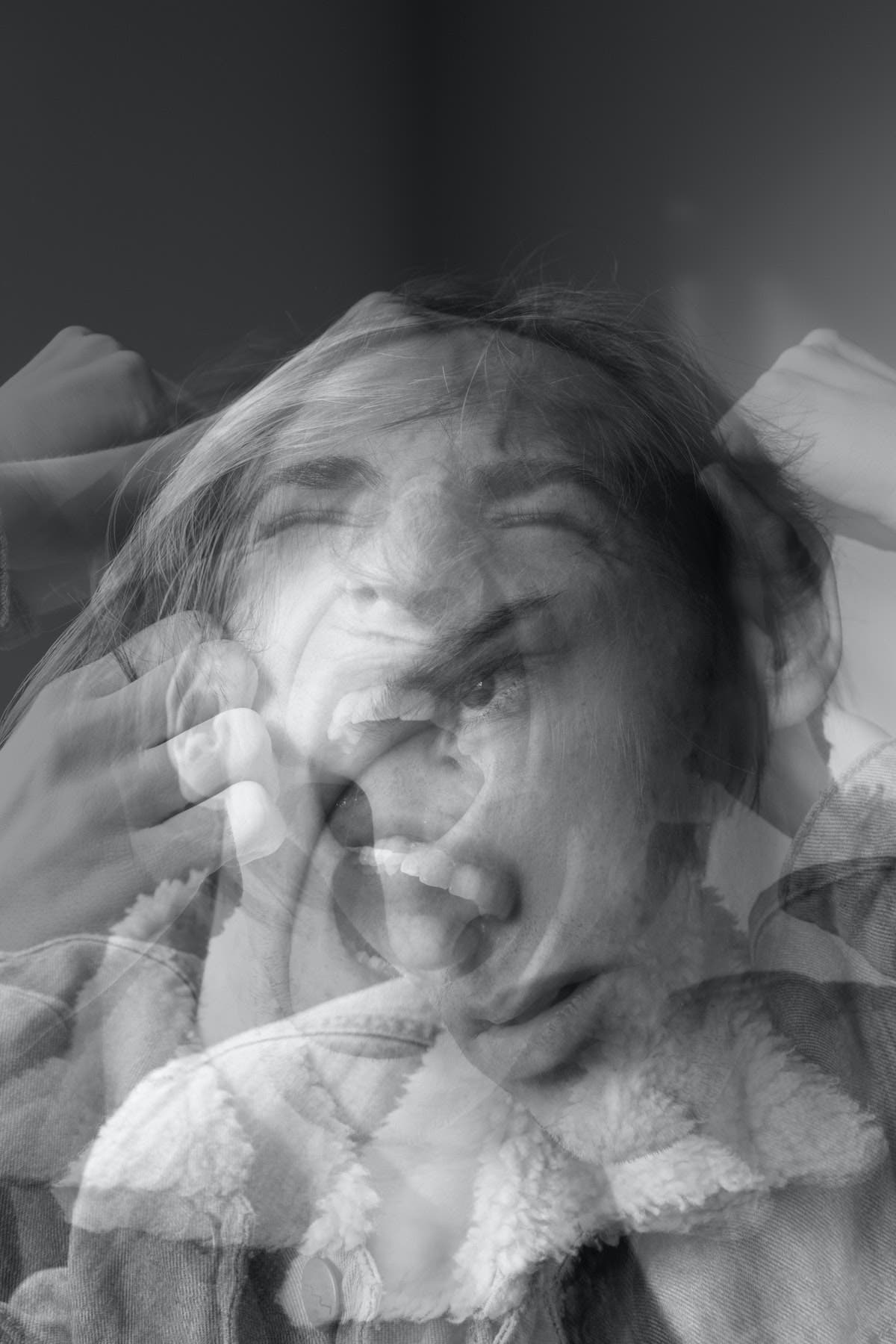
Use color gels
Color gels are filters that change the color of the light. They help you create artistic compositions, achieve a particular mood, or correct color temperature.
Go for a monochromatic look
Black and white self portraits are dramatic and impressive. They also reduce the impact of a busy background or poor framing.
Capture motion blur
Set the camera’s timer or the delay mode of your remote control and move just when the camera takes the photo. Or stay beside a street at rush hour and capture the movement of the cars.
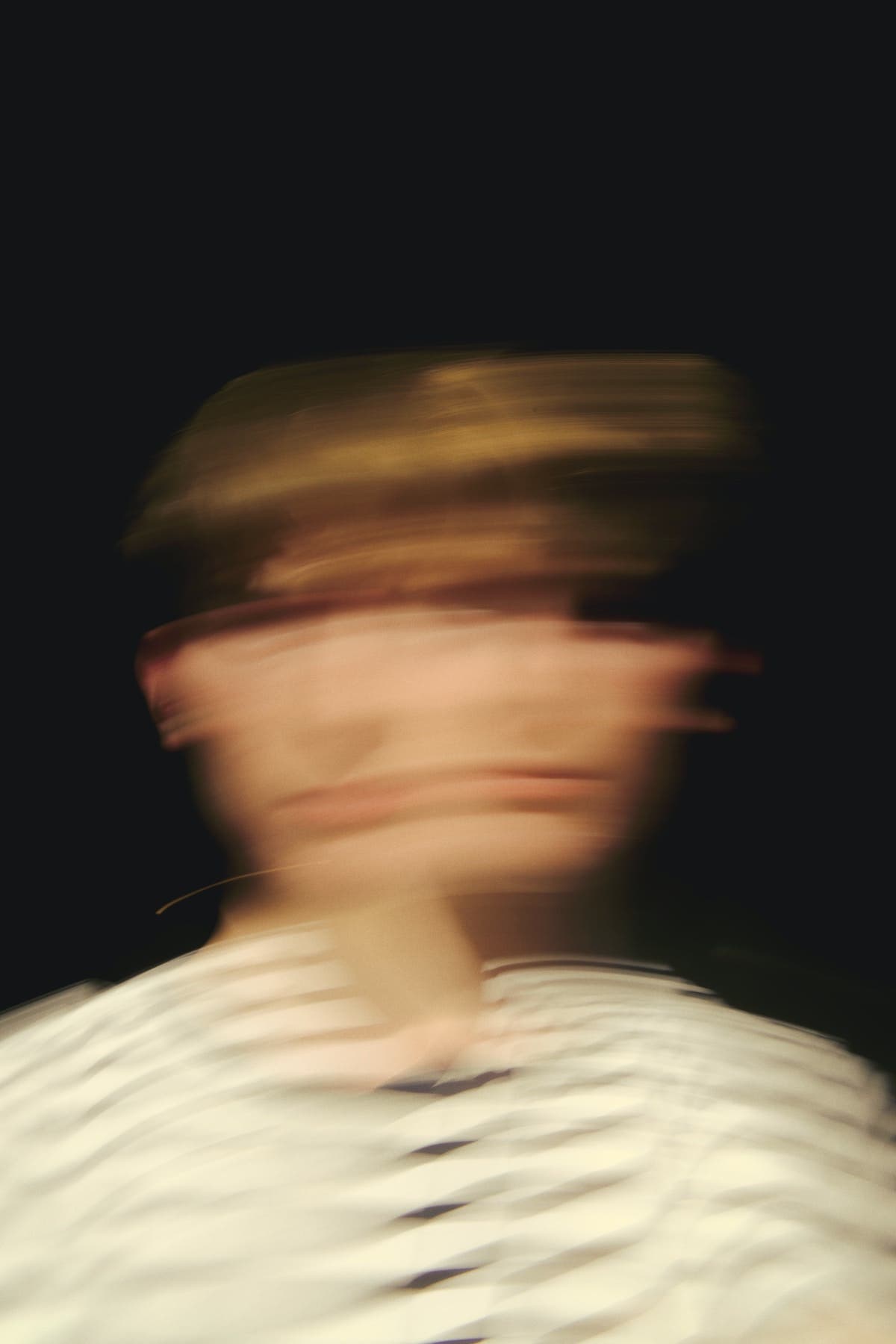
Try low-key lighting
Dim the light or intentionally set the camera for underexposed photographs. It will create a more dramatic and intimate effect.
Try high-key lighting
Use a bright white background, backlit, or intentionally set the camera for overexposed photographs. It will create abstract, futuristic, and artful compositions.
Recreate a famous piece of art
Choose an artwork with a meaningful story and reinterpret it in your personal style. You can opt for enhancing the same message or creating a contrasting one.
Capture only your silhouette
A backlit photo with exposure set for the bright background creates silhouettes. Take self-portraits at sunset or sunrise, and make sure your pose is interesting and captivating.
Try an action shot
Don’t just pose in front of the camera. Do something that enriches the story and tells something more about you, such as depicting a hobby.
Use shadows
Play with highlights and shadows to create intimacy, mystery, and romance. Fluid materials, flowers, and ribbons are good choices.
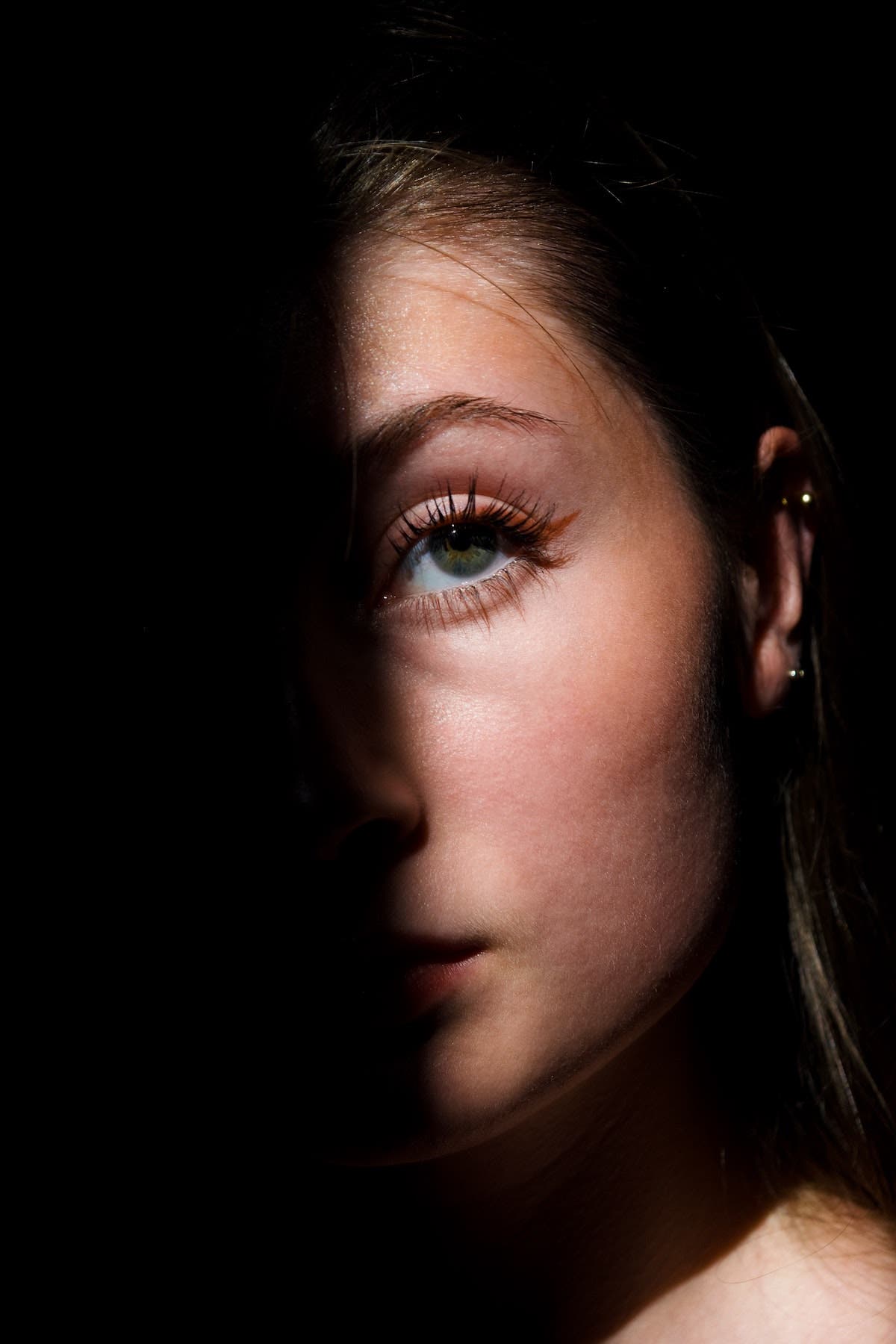
Capture a meaningful background
Although a self portrait focuses on you, the background can add to the story by providing localization, adding a temporal dimension, or creating contrast.
Raise awareness
Use your person as a medium to raise awareness for a cause you believe in. You use images to support environmental protection, or get involved in implementing sustainable solutions or social improvements.
Close-up
Explore close-up and macro photography using you as a model. Your body is an amazing subject — get to know it.
Photograph a part of your body
Frame only a particular part of your body, such as a hand or foot. Include some context (e.g., an contextual background) or focus on shapes and contours for a more abstract composition.
Use props
Prepare for taking self portraits as you would for a regular portrait photo session. Try props: conventional such as balloons and flowers, or unconventional such as kitchen items, raw materials, and paint.
Try the overhead perspective
Usually used for food and product photography, the overhead perspective provides a creative framing. Look for textured backgrounds that contrast your hair color and flatter your physiognomy.
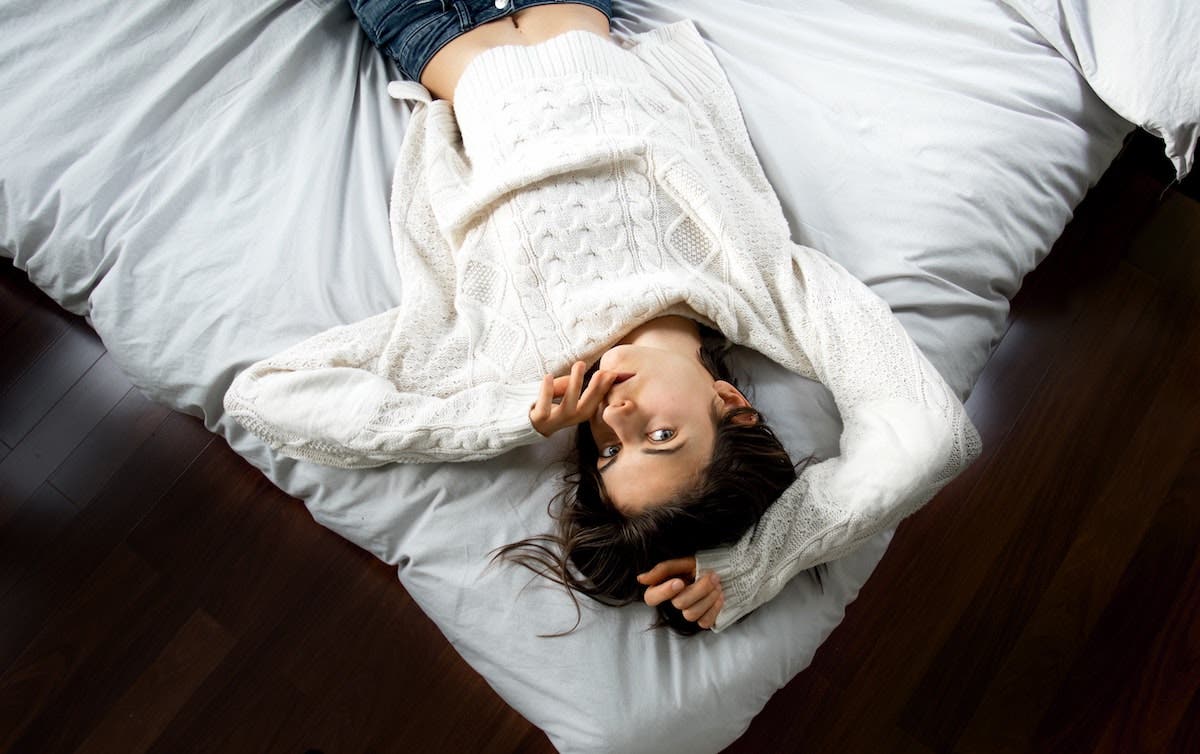
Try a fashion editorial
Play with outfits, poses, and catwalk attitudes. Transform self portraits into a fashion show worthy of any editorial.
Go for a minimalist look
Sometimes, less is more. In portraiture art, minimalist styles make the subject stand out, provide a clean aesthetic, and offer a professional look.
Document a day in your life
Use an intervalometer to take one photo every hour and document your day. You may focus on housework, the photo editing process, or an outdoor photo session.
Include family or friends
Self-portraits may include family members, friends, or pets. It adds context and says a little bit more about you. Candid snapshots are a good choice for this.
Explore fine art portraiture
When you are the model of your photographs, you have complete artistic freedom and plenty of time to perfect the composition. Try complicated poses or unusual aesthetics.
Create an anti-portrait
An anti-portrait provides a sense of depth and wonder. It raises questions and invites the viewer to spend more time figuring out the message of your photograph.
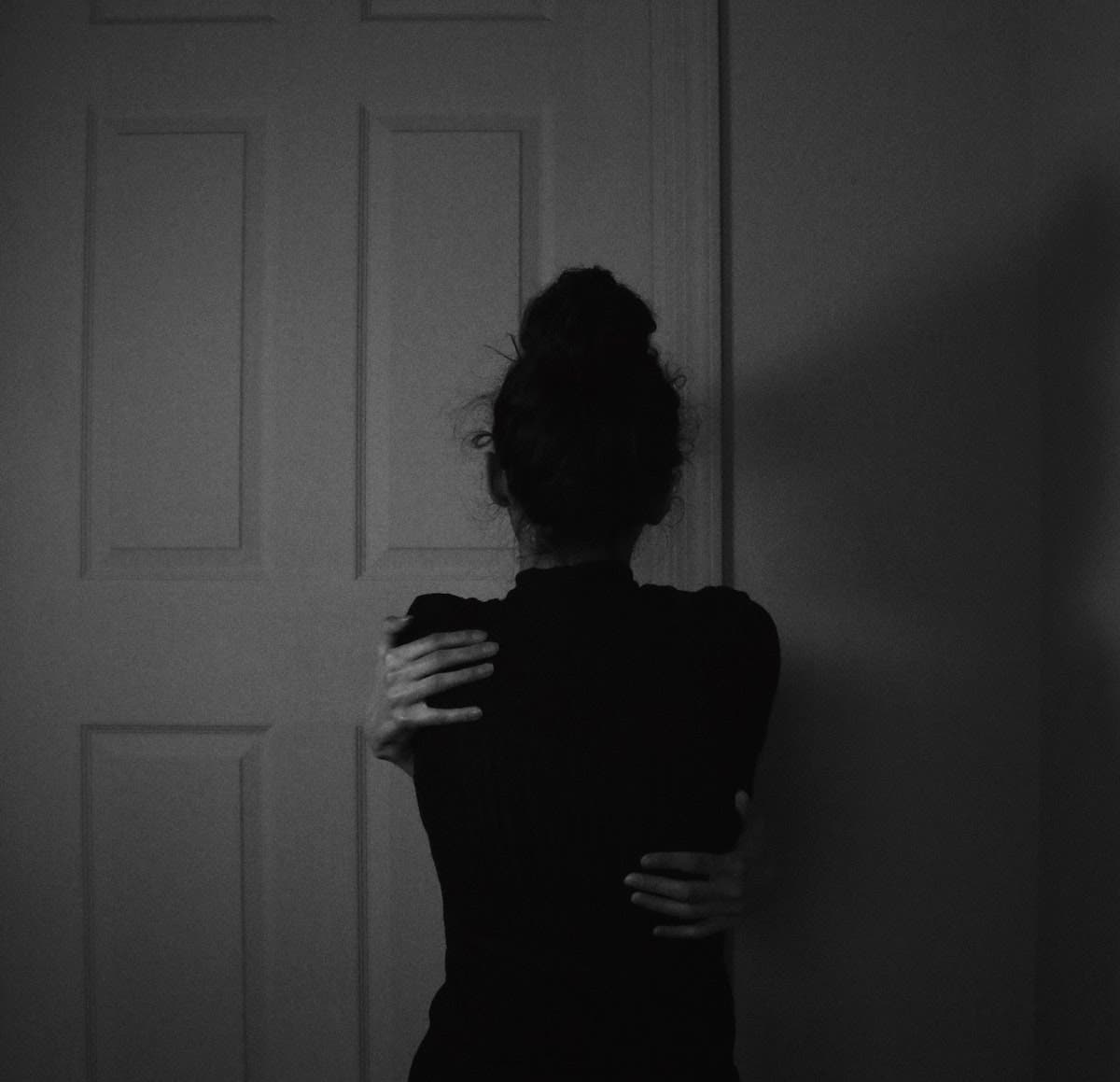
Capture emotions
Explore the universe of emotions and take self portraits when you are extremely happy, sad, fearful, or angry. Show your most vulnerable side as a lesson for your audience.
Experiment with makeup
Makeup provides a broad range of effects and styles — from perfect beauty to anime looks, from horror movie characters to blending in a background. Each persona allows you to be someone else or convey a different message.
Create bokeh effect
Self-portraits look amazing with a bokeh background created by holiday lights or candles. Whether you want to create an atmosphere or hide an unaesthetic background, a smooth bokeh effect will do the trick.
Picture-in-picture
Use self-portraits as a way to learn new techniques, such as picture-in-picture. Use mirrors or natural frames to add a new dimension to your compositions.
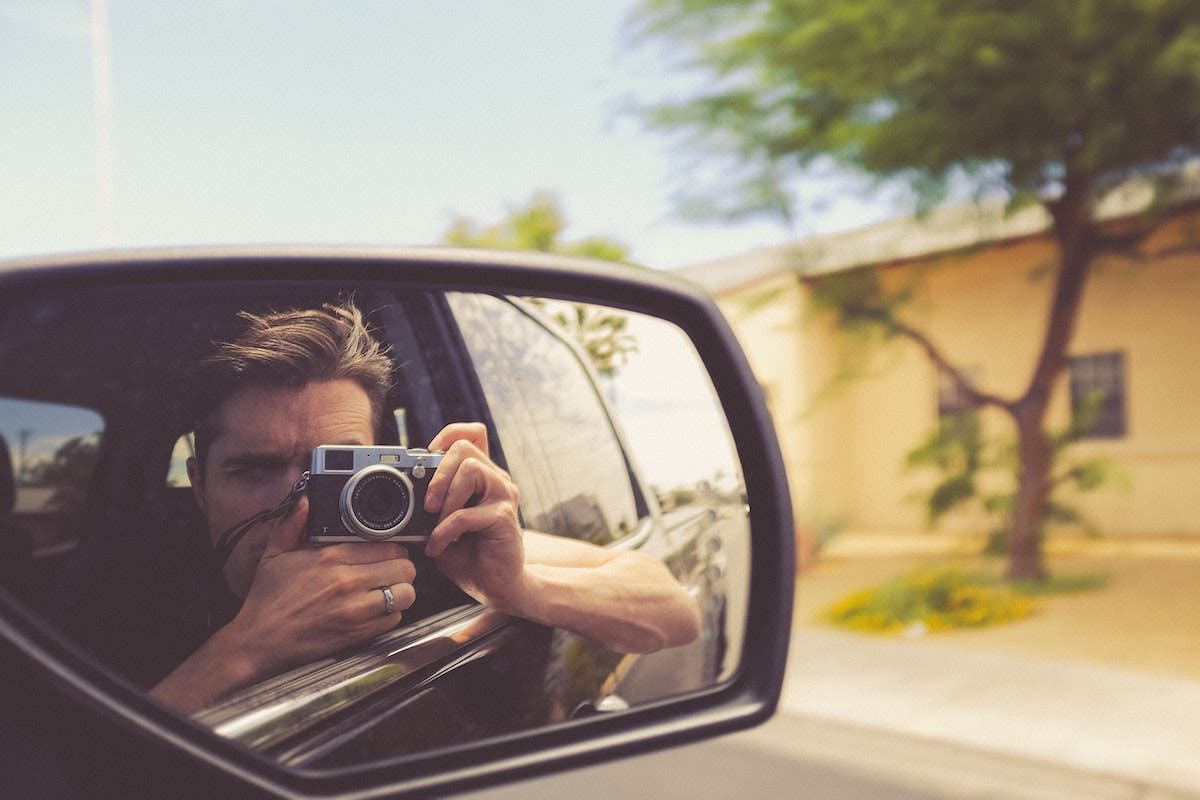
Use unusual angles
Place the camera in any way you like without considering the rules of composition. It’s your time to experiment, so be ambitious and unconventional and apply the saying “Dance like no one is watching.”
Create a narrative
Don’t limit yourself to individual self portraits. Embrace storytelling and create a photo series with a strong narrative line, temporal dimension, and fluid flow.
Capture a dialog scene
If you get lonely in your self portraits, you may want to create a collage in which you are talking with yourself. Use the same photo setup and capture multiple instances of the dialog.
Conclusion
Self-portraits are good opportunities to try new techniques, learn new methods, and experiment with composition and style. Because you are the model, you can grant yourself access to intimate feelings, have the patience to try many camera settings, and pose any way and anywhere you like. Therefore, self portraits help you tremendously on the way to becoming a better photographer.



